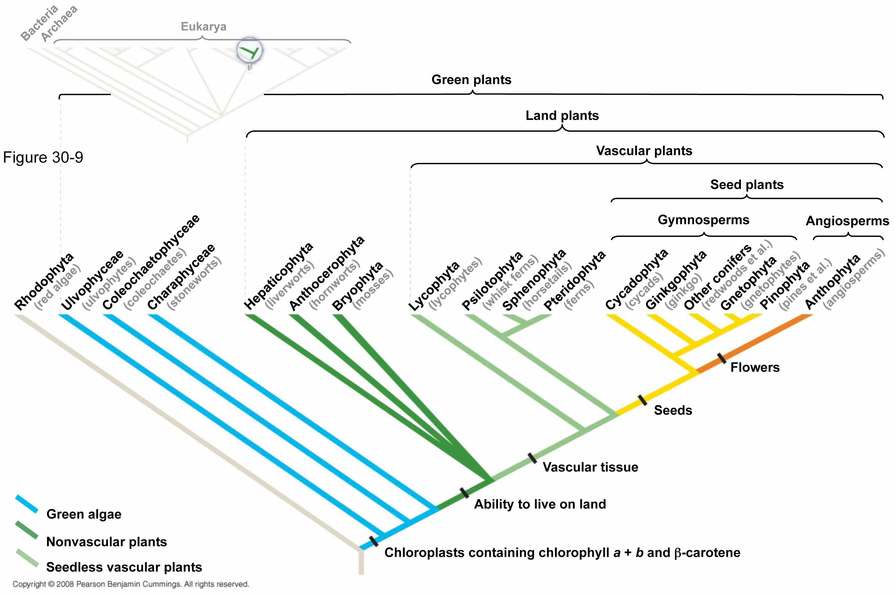Main Events of Plant Evolution (20):
-the egg became fertilized within a female gametangium
- Plants evolved from Green Algae; from a group called the Charophytes
- It is believed that ancestral Charophytes lived in shallow water that often dried up
- These pre-adaptations paved the way for the transition onto land
- In order to move onto land, early plant ancestors had to change their mode of reproduction to suit life on land
-the egg became fertilized within a female gametangium
- Keeping the embryo contained is a fundamental difference between algae and plants
- Early land plants had no competition with other plants nor were they preyed upon by herbivores
- The first land plants lacked vascular tissue (like modern mosses) so they were limited in ability and size
- Root and shoot development and specialization quickly followed and this required the development of a vascular system
- Early vascular plants had begun to diversify by 400 mya
- In the Carboniferous period, large ferns and other seedless plants dominated the Earth
- Next came the transition from homospory to heterospory; since homosporous plants required water for fertilization, they were limited to damp areas or environments; heterospory allows plants to expand to different environments (not dependent on water)
- Heterospory led to the development of the seed which gave the new evolving plants more freedom since they now had a protected embryo capable of mobility and dormancy
- Among seed plants, some developed flowers and fruits which furthered the survival and success rate of the seed to propagate the new plant generations
- These plants, angiosperms, now represent over 235,000 species versus gymnosperms which only include 700 species

